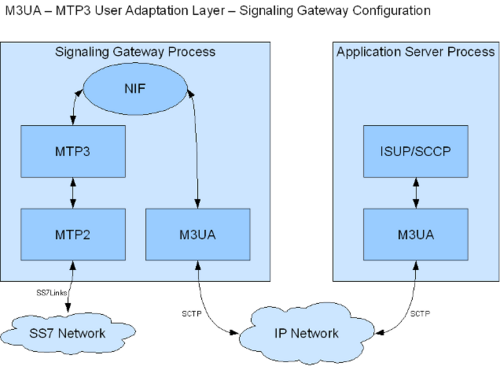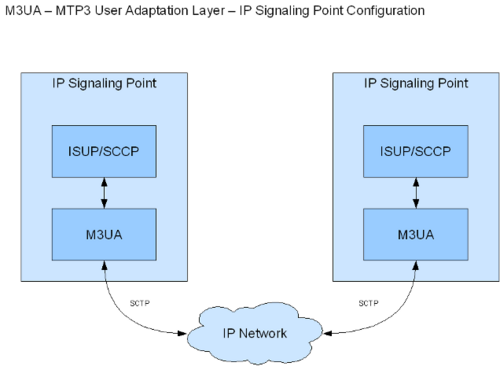M3UA
From TBwiki
(Difference between revisions)
(add revise on major) |
(→References: Added 2.7 and 2.8 links) |
||
| Line 17: | Line 17: | ||
== TelcoBridges and M3UA == | == TelcoBridges and M3UA == | ||
TelcoBridges supports M3UA as part of its support for SIGTRAN. | TelcoBridges supports M3UA as part of its support for SIGTRAN. | ||
| + | |||
| + | == Configuration == | ||
| + | |||
| + | *[[Toolpack:Protocol_Stack_Settings_A#M3UA|M3UA configuration v2.8]] | ||
| + | *[[Web_Portal_Tutorial_Guide_v2.7#M3UA|M3UA configuration v2.7]] | ||
== References == | == References == | ||
Revision as of 10:43, 3 March 2015
The M3UA (Message Transfer Part 3 User Adaptation Layer) layer can be used in 2 ways, either to extend an MTP3link or to replace the MTP3 and MTP2 layers entirely.
FIGURE 1:
FIGURE 2:
When used in Toolpack, the M3UA layer can be configured to interface with either a NIF or ISUP/SCCP layer.
TelcoBridges and M3UA
TelcoBridges supports M3UA as part of its support for SIGTRAN.
Configuration
References
- Article at Protocols.com
- Wikipedia article
- RFC 4666 Signaling System 7 (SS7) Message Transfer Part 3 (MTP3) - User Adaptation Layer (M3UA)

